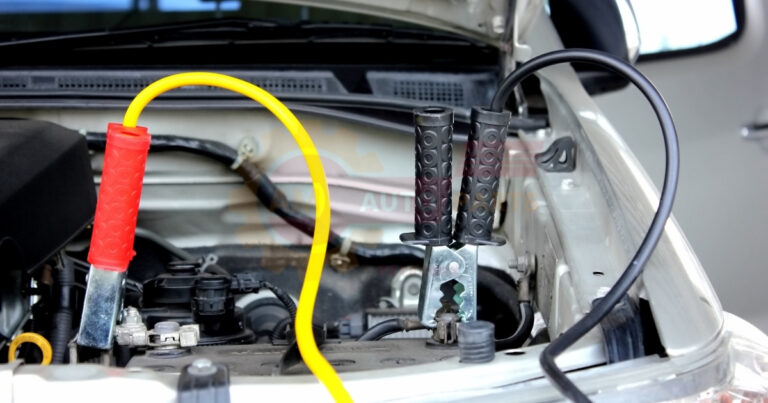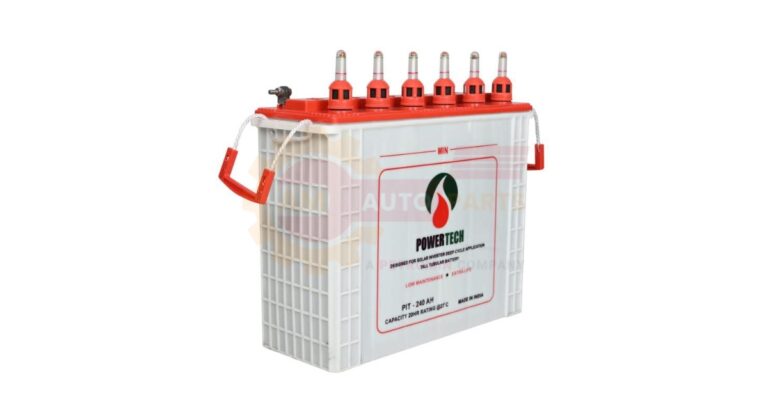Understanding Cold Cranking Amps (CCA)
What is CCA?
Cold Cranking Amps (CCA) is a critical measure of a car battery’s ability to start an engine in cold temperatures. It indicates the number of amps a 12-volt battery can deliver at 0°F for 30 seconds while maintaining a voltage of at least 7.2 volts. This measure is essential because cold weather can significantly impact a battery’s performance, making it harder for the engine to start.
Importance of CCA in Car Batteries
The importance of CCA in car batteries cannot be overstated. A battery with a high CCA rating ensures that your vehicle will start reliably in cold weather conditions. This is particularly crucial for those living in regions with harsh winters. A battery with insufficient CCA may struggle to start the engine, leading to potential delays and inconvenience.
- Ensures reliable engine start in cold weather
- Prevents battery-related starting issues
- Essential for vehicles in cold climates
How CCA Affects Battery Performance
CCA directly affects battery performance by determining how well it can supply power to the engine during startup. A higher CCA rating means the battery can deliver more power, which is especially important in cold conditions. However, it’s also important to balance CCA with other battery specifications to ensure overall performance and longevity.
- Higher CCA provides more power during startup
- Essential for maintaining battery efficiency
- Balances with other battery specs for optimal performance
Determining the Right CCA for Your Vehicle
Factors Influencing CCA Requirements
Several factors influence the CCA requirements for your vehicle. These include the engine size, the type of vehicle, and the climate in which you operate the vehicle. Larger engines typically require batteries with higher CCA ratings, while smaller engines may function well with lower CCA ratings.
- Engine size and type
- Vehicle type (e.g., sedan, SUV, truck)
- Climate and weather conditions
Recommended CCA Ranges for Different Vehicle Types
Different vehicle types have varying CCA requirements. For instance, a compact car may require a battery with a CCA rating of 400-600, while a larger SUV or truck might need a battery with a CCA rating of 700-1000. It’s crucial to choose a battery that meets or exceeds the recommended CCA for your specific vehicle type.
| Vehicle Type | Recommended CCA Range |
| Compact Car | 400-600 |
| Sedan | 500-700 |
| SUV/Truck | 700-1000 |
Using Your Vehicle Manual to Find the Ideal CCA
Your vehicle’s manual is an invaluable resource for determining the ideal CCA for your car battery. It provides manufacturer-recommended specifications that ensure optimal performance and compatibility. Always refer to the manual before purchasing a new battery to avoid potential issues.
- Consult the vehicle manual for CCA specifications
- Ensures compatibility and performance
- Avoids potential battery-related problems
Signs of Low Cranking Amps in Car Batteries
Slow Engine Start
A slow engine start is a common sign of low cranking amps in a car battery. If your engine takes longer than usual to start, it may indicate that the battery is not providing enough power. This can be particularly noticeable in colder weather when the battery’s efficiency is reduced.
Clicking Sound When Turning the Key
Hearing a clicking sound when turning the key is another indicator of low cranking amps. This sound occurs when the battery cannot supply enough power to engage the starter motor. If you experience this issue, it’s essential to test your battery’s CCA to determine if a replacement is necessary.
Dimming Headlights During Ignition
Dimming headlights during ignition can also signal low cranking amps. When the battery struggles to provide sufficient power, it may divert energy from other systems, causing the headlights to dim. This is a clear sign that the battery may need to be tested or replaced.
- Slow engine start
- Clicking sound during ignition
- Dimming headlights
Measuring Cranking Amps in Your Car Battery
Using a Battery Load Tester
A battery load tester is a valuable tool for measuring cranking amps in your car battery. It simulates the load that a battery would experience during engine start, providing an accurate reading of its CCA. Regular testing can help identify potential issues before they become serious problems.
Interpreting Battery Test Results
Interpreting battery test results is crucial for understanding your battery’s health. A test result that shows a CCA lower than the manufacturer’s recommendation indicates that the battery may be failing. It’s important to address any discrepancies promptly to avoid unexpected breakdowns.
When to Seek Professional Battery Testing
While DIY testing is possible, there are times when professional battery testing is advisable. If you’re unsure about the test results or if the battery shows signs of significant wear, consulting a professional can provide peace of mind and ensure accurate diagnostics.
- Use a battery load tester for accurate CCA measurement
- Understand test results to assess battery health
- Seek professional testing for accurate diagnostics
Maintaining Optimal Cranking Amps in Your Battery
Regular Battery Maintenance Tips
Regular battery maintenance is key to maintaining optimal cranking amps. This includes cleaning the battery terminals, checking for corrosion, and ensuring that the battery is securely mounted. Regular maintenance can extend the battery’s lifespan and improve its performance.
Proper Charging Techniques
Proper charging techniques are essential for maintaining a healthy battery. Avoid overcharging, as it can damage the battery and reduce its CCA. Use a quality charger and follow the manufacturer’s guidelines to ensure the battery is charged correctly.
Protecting Your Battery from Extreme Temperatures
Extreme temperatures can significantly impact a battery’s performance. Protecting your battery from extreme heat and cold can help maintain its CCA. Consider using a battery blanket in cold weather and parking in shaded areas during hot weather to preserve battery health.
- Clean battery terminals regularly
- Avoid overcharging the battery
- Protect from extreme temperatures
The Relationship Between Voltage and Cranking Amps
Understanding Battery Voltage
Battery voltage is a measure of the electrical potential difference between the battery’s terminals. It plays a crucial role in determining the battery’s ability to deliver power. A standard car battery typically has a voltage of 12 volts, which is necessary for starting the engine and powering electrical systems.
How Voltage Affects Cranking Performance
Voltage directly affects cranking performance by influencing the battery’s ability to deliver power. A drop in voltage can lead to reduced cranking amps, making it harder for the engine to start. Maintaining the correct voltage is essential for ensuring reliable engine performance.
Balancing Voltage and CCA for Optimal Battery Function
Balancing voltage and CCA is crucial for optimal battery function. While CCA measures the battery’s starting power, voltage ensures that the battery can sustain that power over time. Ensuring both are within the recommended range is key to maintaining a healthy battery.
- Voltage is crucial for power delivery
- Affects cranking performance
- Balance voltage and CCA for optimal function
Upgrading Your Car Battery for Better Cranking Performance
When to Consider a Higher CCA Battery
Upgrading to a higher CCA battery may be beneficial if you frequently drive in cold climates or have added electrical accessories to your vehicle. A higher CCA battery can provide additional power, ensuring reliable starts and improved performance.
Potential Benefits of Increased Cranking Amps
Increased cranking amps can offer several benefits, including faster engine starts and improved reliability in cold weather. A battery with higher CCA can also handle additional electrical loads, making it ideal for vehicles with aftermarket accessories.
Compatibility Considerations When Upgrading
When upgrading your battery, it’s essential to consider compatibility. Ensure that the new battery fits properly in the battery compartment and meets the vehicle’s electrical requirements. Consulting with professionals can help ensure a smooth upgrade process.
- Consider higher CCA for cold climates
- Benefits include faster starts and reliability
- Ensure compatibility with vehicle specifications
Common Misconceptions About Cranking Amps
CCA vs. CA (Cranking Amps)
A common misconception is that CCA and CA (Cranking Amps) are the same. While both measure a battery’s starting power, CCA is tested at 0°F, while CA is tested at 32°F. CCA is a more critical measure for cold weather performance.
The Impact of Temperature on Cranking Performance
Temperature significantly impacts cranking performance. Cold temperatures can reduce a battery’s capacity, making it harder to start the engine. Understanding this impact is crucial for selecting the right battery for your climate.
Debunking Myths About Battery Size and CCA
There is a myth that a larger battery always has a higher CCA. However, battery size does not necessarily correlate with CCA. It’s essential to choose a battery based on its specifications rather than its physical size. Battery acid buildup happens when too much acid collects inside a battery This can damage the battery and make it work less well over time Jumpstart battery maintenance involves keeping your car’s emergency battery pack charged and clean Regularly check and recharge your
Battery production process Factories mix special materials and put them into cases to make batteries then they test the batteries to make sure they work properly before sending them out Battery health percentage
Automotive electrical measurement helps check if car parts that use electricity are working right It uses special tools to test things like batteries wires and lights in vehicles Jumpstart dead battery is a quick way to get your car running again when the battery is out of power You can use special cables to connect your car’s dead battery to another car’s working battery to bring it back to life
Automotive Power Depletion happens when a car’s battery loses energy over time This can make it hard for the car to start or run its electrical parts properly Battery selection guide Choose the right battery for your device by looking at size voltage and how long it lasts
Automotive energy solutions help cars and trucks run using different power sources like electricity batteries and hydrogen fuel cells instead of just gasoline These new ways of powering vehicles can make them cleaner and better for the environment
- CCA and CA are different measures
- Temperature affects cranking performance
- Battery size doesn’t determine CCA
Environmental Factors Affecting Cranking Amps
Cold Weather and Battery Performance
Cold weather can significantly reduce a battery’s performance by decreasing its capacity. This reduction can lead to starting issues, making it essential to choose a battery with a suitable CCA for cold climates.
Hot Climate Considerations for CCA
In hot climates, high temperatures can accelerate battery degradation, reducing its lifespan. It’s important to select a battery that can withstand high temperatures and maintain its performance over time.
Adjusting CCA Requirements Based on Your Location
Adjusting CCA requirements based on your location is crucial for optimal battery performance. Consider the climate and weather conditions in your area when selecting a battery to ensure it meets your vehicle’s needs.
- Cold weather reduces battery capacity
- High temperatures accelerate degradation
- Adjust CCA based on climate conditions
FAQ’s
What is considered good cranking amps for a car battery?
Good cranking amps for a car battery typically range from 400 to 1000 CCA, depending on the vehicle’s requirements. The ideal CCA varies based on factors such as engine size and climate conditions. Always refer to your vehicle’s manual or consult with professionals like AM Autoparts for specific recommendations.
How many cranking amps do I need for my car?
The number of cranking amps needed for your car depends on its make, model, and engine size. Consult your vehicle’s manual to determine the recommended CCA for optimal performance. If in doubt, contacting experts like AM Autoparts can provide additional guidance.
Can a car battery have too many cranking amps?
While it’s generally safe to use a battery with higher cranking amps than required, it’s essential to ensure it fits properly in your vehicle. A battery with excessive CCA may not offer additional benefits and could lead to compatibility issues. Always align the battery’s CCA with your vehicle’s specifications.
How do I know if my car battery has enough cranking amps?
To determine if your car battery has sufficient cranking amps, compare its CCA rating to your vehicle’s requirements. A battery load test can provide an accurate assessment of its CCA. Consulting with professionals like AM Autoparts can also help verify if your battery meets the necessary standards.






